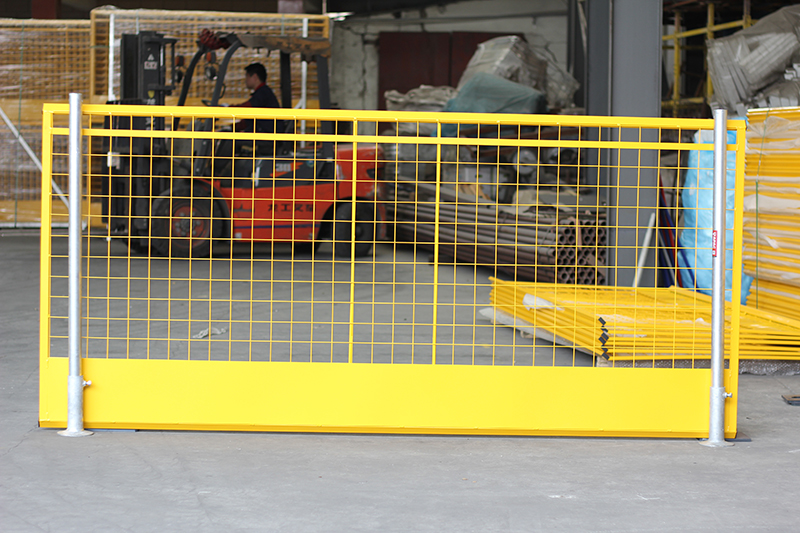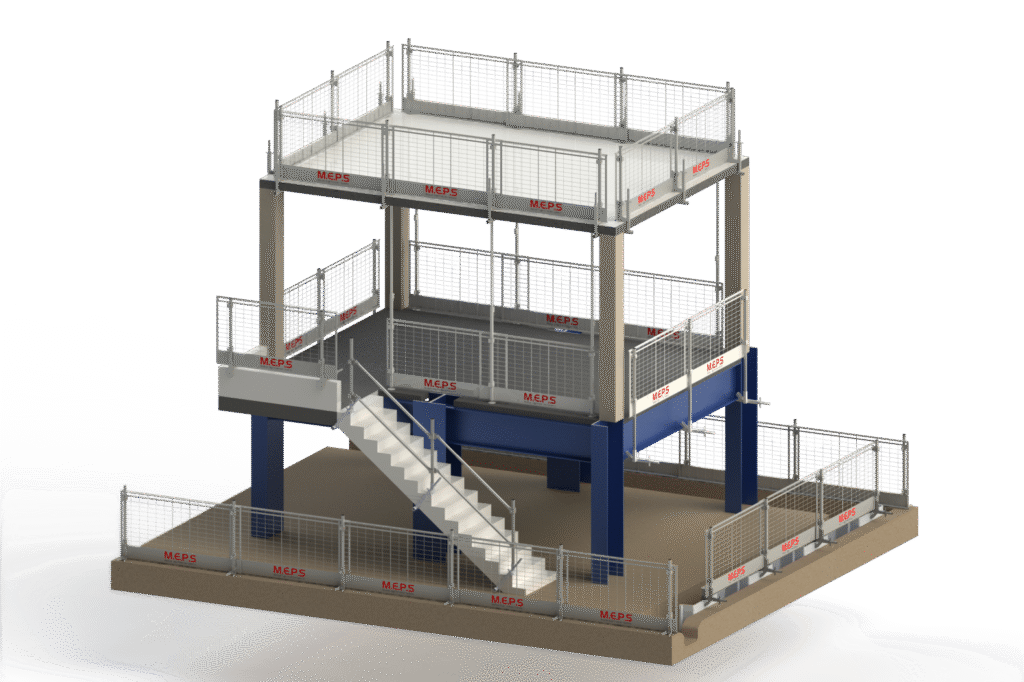
Introduction: The Critical Role of Edge Protection
Falls remain the single greatest cause of fatalities in the construction industry, a sobering fact that underscores the absolute necessity of robust fall protection systems. On any construction site, unprotected edges—whether on roofs, floors, or scaffolding—represent a severe and constant hazard.
To combat this danger and ensure safe working conditions across the United States, the Occupational Safety and Health Administration (OSHA) enforces strict regulations. This article serves as a comprehensive guide to the specific OSHA standards for edge protection, focusing on guardrail systems, which are the most common and effective form of passive fall prevention. Compliance with these rules is not merely a legal obligation; it is a fundamental safety practice that saves lives and protects livelihoods.
The Foundation of OSHA Fall Protection Standards
The primary regulation governing fall protection in construction is 29 CFR 1926 Subpart M – Fall Protection. This subpart clearly defines when fall protection must be implemented and outlines the criteria for acceptable systems.
The 6-Foot Trigger Height
For the construction industry, OSHA mandates that fall protection must be provided for each employee on a walking or working surface with an unprotected side or edge that is 6 feet (1.8 meters) or more above a lower level. This "6-foot rule" is the critical threshold that triggers the requirement for a guardrail system, safety net system, or personal fall arrest system.
It is important to note that this requirement differs from the General Industry standard (29 CFR 1910), which requires fall protection at 4 feet. Construction professionals must adhere strictly to the 6-foot rule as defined in Subpart M.
Detailed Requirements for OSHA-Compliant Guardrail Systems
When a guardrail system is chosen as the method of fall protection, it must meet stringent criteria to ensure it can withstand the forces of a worker falling against it. OSHA’s technical specifications for guardrail systems are detailed in 29 CFR 1926.502(b).
The following table summarizes the essential physical and performance requirements for an OSHA-compliant guardrail system:
Component | OSHA Requirement (29 CFR 1926.502(b)) | Metric Equivalent | Purpose |
|---|---|---|---|
Top Rail Height | Nominal height of 42 inches (± 3 inches) above the walking/working level. | 107 cm (± 7.6 cm) | Prevents a worker from falling over the top. |
Top Rail Strength | Must withstand a force of at least 200 pounds (890 N) applied in a downward or outward direction within 2 inches of the top edge. | 890 Newtons | Ensures the rail will not fail under impact. |
Midrail Requirement | Required when there is no wall or parapet at least 21 inches high. Must be installed approximately halfway between the top rail and the walking surface. | Prevents a worker from falling through the opening. | |
Midrail Strength | Must withstand a force of at least 150 pounds (667 N) applied in a downward or outward direction. | 667 Newtons | Ensures the midrail provides adequate resistance. |
Surface Smoothness | Surfaces must be smooth to prevent injury from punctures or lacerations, and to prevent snagging of clothing. | Minimizes secondary hazards. |
The Importance of Toeboards and Falling Object Protection
While guardrails are designed to protect workers from falling off an edge, toeboards are essential for protecting workers below the edge from falling objects. OSHA requires falling object protection whenever tools, materials, or debris could fall from an elevated walking/working surface and strike employees below.
The specifications for compliant toeboards are as follows:
- Minimum Height: Toeboards must be a minimum of 3.5 inches (8.9 cm) in vertical height from their top edge to the level of the walking/working surface.
- Maximum Clearance: There must be no more than a 1/4-inch gap above the walking surface.
- Strength: Toeboards must be capable of withstanding, without failure, a force of at least 50 pounds (222 N) applied in any outward or downward direction.
If materials are piled higher than the toeboard, screening or paneling must be erected from the toeboard to the midrail or top rail to contain the objects.
Edge Protection: OSHA vs. International Standards (BS EN 13374)
As a global supplier of edge protection systems, APAC BUILDER EQUIPMENT LTD understands that many international construction projects operate under different, yet equally rigorous, safety standards. Our systems are designed to meet the demanding European standard, BS EN 13374: Temporary edge protection systems – Product specification, test methods, which is often considered a benchmark for quality and performance.
Standard | Focus | Key Characteristic |
|---|---|---|
OSHA (29 CFR 1926) | Regulatory, Performance-Based | Focuses on minimum strength (200 lbs) and dimensional requirements (42" height) for use in the United States. |
BS EN 13374 | Product Specification, Test Methods | Classifies systems (Class A, B, C) based on their ability to withstand static loads, dynamic loads, and impact forces, ensuring product reliability. |
While OSHA is the mandatory standard for US projects, systems compliant with the higher-level BS EN 13374 standard are typically engineered to meet or exceed OSHA’s performance requirements. By choosing a system that adheres to a globally recognized, high-performance standard like BS EN 13374, you are ensuring a margin of safety and reliability that goes beyond mere minimum compliance, providing maximum protection for your US-based projects.

Conclusion: Ensuring Compliance and Safety
Understanding and implementing OSHA’s edge protection requirements is a non-negotiable aspect of construction safety. The core principles are clear: fall protection is required at 6 feet, guardrails must be 42 inches high, and the top rail must withstand 200 pounds of force.
By partnering with a trusted supplier that provides high-quality, rigorously tested edge protection systems, you can ensure your site is fully compliant and your workers are protected. Whether you are navigating the specific rules of OSHA or seeking the superior performance of BS EN 13374-compliant equipment, choosing the right system is the first step toward a safer, more productive construction site.
